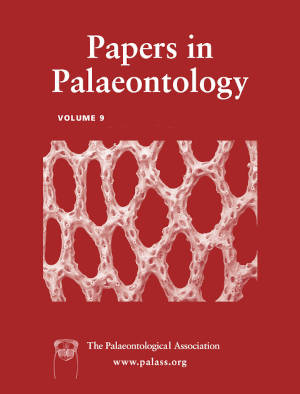Article: Influence of abiotic and biotic factors on benthic marine community composition, structure and stability: a multidisciplinary approach to molluscan assemblages from the Miocene of northern Germany
Publication: Papers in Palaeontology
Volume:
9
Part:
3
Publication Date:
2023
Article number:
e1496
Author(s):
Daria Carobene, Robert Bussert, Ulrich Struck, Carl J. Reddin, and Martin Aberhan
DOI:
10.1002/spp2.1496
Abstract
Abstract The Miocene mica-clay deposits of Groß Pampau (northern Germany) are well known for their diverse assemblages of marine mammals. Despite numerous systematic and biostratigraphic studies, an in-depth palaeoecological analysis of its molluscan assemblages and a comprehensive palaeoenvironmental reconstruction are lacking. Here, we integrate new faunal, sedimentological and geochemical data to reconstruct the marine palaeoecosystem of the Upper Miocene sedimentary succession of Groß Pampau, and to identify the drivers controlling the composition, ecological structure and temporal dynamics of its macrobenthic molluscan assemblages. Fossil evidence, coupled with analyses of clay mineral composition, grain size distribution and geochemical data (total organic carbon, total nitrogen, δ13C, δ18O, δ15N of sediment and shells), suggests a warm–temperate, mesotrophic, low-energy, offshore marine setting mostly below storm wave base and a pronounced surface-to-bottom water temperature gradient. Low variability in sedimentological and geochemical signals indicates generally stable physicochemical conditions, whereas the occurrence of the opportunistic species Varicorbula gibba suggests occasionally unfavourable bottom conditions, possibly related to transient hypoxia. Canonical correspondence analysis indicates that the distribution of molluscan assemblages correlates with total organic carbon and nitrogen content, suggesting organic matter availability at the sea floor as a controlling factor. A pattern of repetitive punctuated stasis of molluscan assemblages is defined by the temporal persistence in taxonomic and ecological composition, occasionally interrupted by shifts to a different faunal configuration. We suggest that both stable environmental conditions and biotic interactions (i.e. the top-down control exerted by carnivorous gastropods and environmental modification by ubiquitous burrowing deposit feeders) probably contributed to the observed temporal stability.
